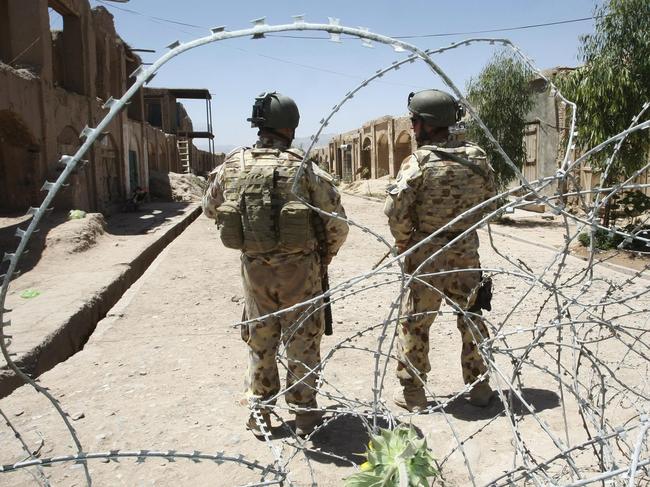New eye movement PTSD therapy offers fresh hope to veterans
A treatment that could offer hopes to those suffering post-traumatic stress disorder will soon be available in Australia. But experts have warned of a worrying downside.

Health
Don't miss out on the headlines from Health. Followed categories will be added to My News.
A promising PTSD treatment which uses eye movements to help sufferers “rewrite” bad memories will be taught in Australia from early next year, and may also be used to manage chronic pain.
Accelerated Resolution Therapy (ART) teaches PTSD sufferers to script new memories “like the director of a movie changing the ending”, and can be effective in as little as one therapy session, according to US expert Professor Kevin Kip.
Post-traumatic stress disorder (PTSD) is an anxiety disorder affecting about one million Australians each year, with military personnel affected at higher rates than the general community. Serious car accidents and assaults are also major causes of PTSD.
Mental health the biggest challenge for veterans
Lest we forget the hero veterans who lost their battle

“We change the ending for the way you see the trauma in your brain,” Prof. Kip said. “This is like the director of the movie changing the ending. The firefight didn’t happen, your friends were wounded but taken to safety and recovered; end it however you want.”
The treatment — which involves a patient moving their eyes horizontally while thinking about their trauma or pain — is being used very successfully in America to help war veterans, assault victims and others dealing with life-altering events overcome trauma, but is new to Australia.

It will be taught to Australian clinicians dealing with PTSD patients through Bond University.
Several studies have backed the effectiveness of ART, which has a success rate of about 70 per cent.
Gold Coast psychologist Dr Peta Stapleton is teaming up with Professor Kip to study whether ART and a therapy she is expert in called Emotional Freedom Techniques (EFT), can be used equally effectively for management of chronic pain.
EFT — also known as psychological acupuncture — involves tapping on a patient’s acupuncture points as they are thinking about their trauma or pain.
Both ART (a variant of a more well-known treatment called Eye Movement Desensitisation and Reprocessing, or EMDR) and EFT were “body level interventions”, which worked in similar ways, Dr Stapleton said.
“The brain can’t process two different things at once because it’s got competing demands, so by moving those eyes through both hemispheres, backwards and forwards and backwards and forwards while they are in that state of distress, it allows the distress to collapse,” she said.
But Professor Kip, from the University of South Florida, warned ART failed with some veterans because they did not want to change the way they recalled memories.

“One soldier said, ‘I don’t want to dishonour my friends. I want to remember exactly as it was’,” he said.
According to SANE Australia 25 per cent of Australians exposed to traumatic events develop PTSD and 12 per cent will experience PTSD in their lifetime.
PTSD symptoms include reliving a traumatic event through unwanted memories, nightmares, or flashbacks. Sufferers often report feeling wound up, having trouble sleeping or concentrating, being angry and irritable or constantly being on the lookout for danger and unable to relax.
Dr Stapleton said the cost of the three-day intensive ART training program was expected to be less than $1000 per clinician.
A spokesman for the Department of Veterans’ Affairs (DVA) said there was emerging evidence to support ART as a treatment for PTSD in Australian veterans, but more was needed before it could be recommended in clinical treatment guidelines.
Originally published as New eye movement PTSD therapy offers fresh hope to veterans


